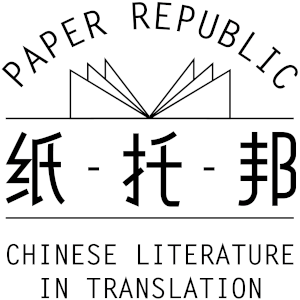Thanks to a tweet from Yilin Wang, I came across an article in Asymptote, Jen Calleja and Sophie Collins, "She knows too much: 'Bridge Translations,' 'Literal Translations,' and Long-Term Harm", which discusses how some collaborative literary translation projects and workshops have perpetuated the problematic distinction between "literal" and "artistic" translations.
This is a fascinating and well-argued article. I agree completely with the thesis that translators are marginalized and it is surprising in a moment when their creative agency is beginning to be recognized, that the act of translating is still often obscured or buried as in the (arguably extreme) example cited in Eleanor Goodman’s epigraph. I would like to point out, however, that I contributed to what I think was a more reasonable project, Zhang Er and Chen Dongdong, eds., Another Kind of Nation: An Anthology of Contemporary Chinese Poetry (Talisman, 2007), as a collaborative translator working with a published American poet in a way that resonates with the distinction between "bridge translator" and "real writer." I came away with a vivid sense of how invaluable the contribution of the poet was to my rendition, after quite vigorous give-and-take. If Calleja and Collins’ article clarified anything for me, it was that I probably have not yet attained the status of a literary translator, and that I may not belong to the class defended by the authors, as Eleanor Goodman and many others in the Chinese to English field who themselves are creative writers and often have training in creative writing do. Even if it can (and should) be said that the idea of a literal or bridge translator is unhelpful, misleading or harmful, I think it could also be said that many like myself who translate are academics who arguably were trained to be “literal translators,” sometimes despite ourselves.
I think that while it is essential to assert the subjective and creative aspects of every act of translation, whether conceived of as literal or liberal, at the same time I disagree with the apparent implication that there is no meaningful distinction between a rendition that cleaves closely to the syntax of the source text (and is thus in many cases more ungainly in the target language), and one that soars freely in the target idiom, and which critics and readers would usually value more highly. I agree that the idea of “fidelity” is not useful in clarifying this distinction. But as an instructor of literary translation and a grader of (nonliterary) Chinese-to-English translation exams for the American Translator’s Association, I find the article’s inattention of the role of grammatical and rhetorical structures of the source text as a basis for the idea of a “literal” or “bridge” translation troubling. I would never rely on the degree of adherence to the structure of a source text as an important criterion for evaluating a literary translation, yet I believe the ability to grasp and render those structures, as a matter of academic exercise, is a fundamental ability of any translator, literary or otherwise.


Comments
There are no comments yet.